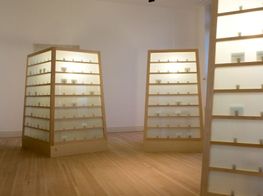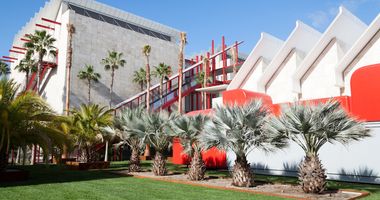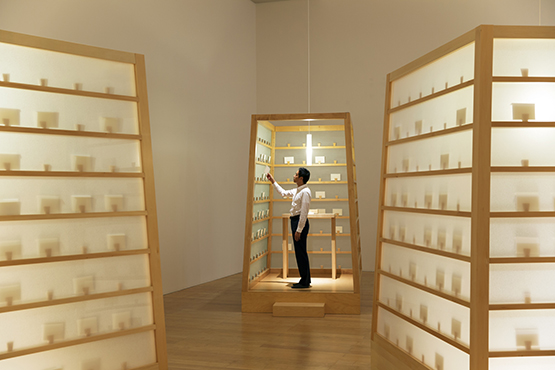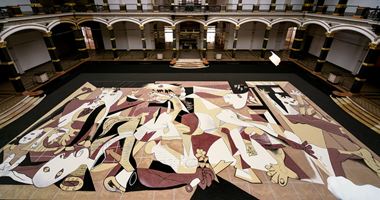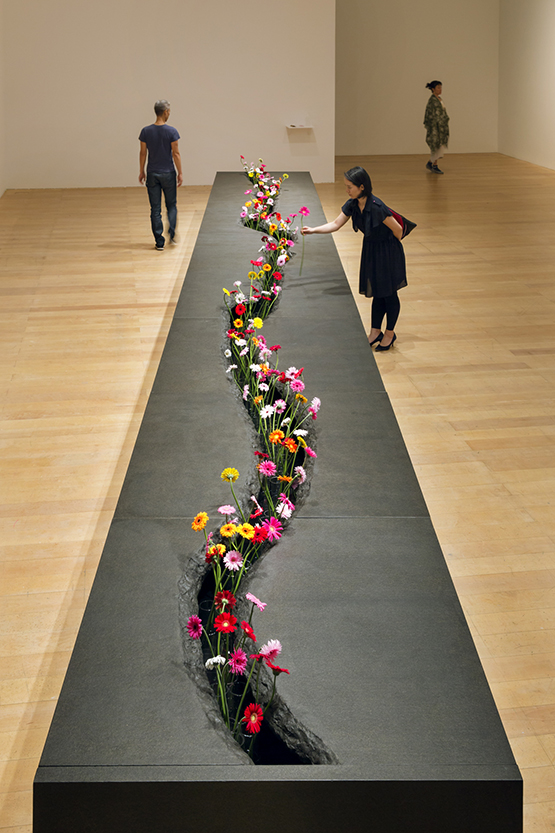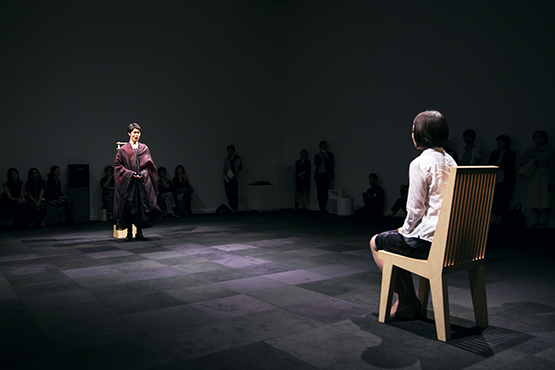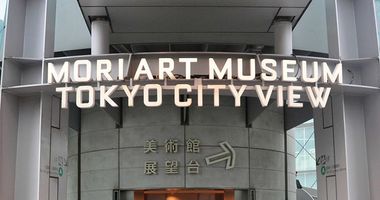Lee Mingwei
Lee Mingwei. Photo courtesy: Taipei Fine Arts Museum

Lee Mingwei. Photo courtesy: Taipei Fine Arts Museum
Sonic Blossom, the project for which Taiwanese artist Lee Mingwei is arguably best known, opens on 30 October at The Metropolitan Museum of Art in New York. The work is a performance piece in which visitors are asked, 'May I give you a gift of song?' If they accept, a vocalist will sing one of Schubert's Lieder to them.
Lee calls his work 'living art'; his installations directly involve their visitors, inviting them to participate in different ways, for example by giving a flower to a stranger (The Moving Garden, 2009) or writing a letter (The Letter Writing Project, 1998). Central to Lee's practice is the idea of gift-giving as a form of communication, interaction, and experiment. Following his first commission for the Whitney Museum of American Art in 1998, Lee's work has been shown around the world at institutions including the Los Angeles County Museum of Art, Museum of Contemporary Art Taipei, the Ullens Center for Contemporary Art in Beijing, Mori Art Museum in Tokyo, the Museum of Fine Arts in Boston, and in a number of biennials.
IWYou have said that the Met is your favorite museum.
LMIt has to be my favorite museum; when I was living in New York, it was really my playground. I often would just go for a Sunday afternoon. There are so many unusual objects and paintings; it's really a miracle that such an institution exists.
IWThe Met is obviously a very traditional sort of museum with objects arranged in old-fashioned geographical sections; how do you feel about it in relation to your own practice, and how do the experiences fit together?
LMTo be able to do my work in an encyclopedic museum like the Met is incredibly exciting. My first encounter with this type of museum was at LACMA. Most of my work entails aesthetics and philosophies that come from different traditions; Sonic Blossom comes from Schubert's Lieder in the early 1800s. But the main idea of this project is about gift-giving, and that goes back to the dawn of human interaction. We give gifts to people, probably not strangers, but to people whom we love and care for. This project is a little bit unusual in that it's giving a gift to a stranger. The singer gives this gift to someone he or she encounters, and that's it.
IWIt's interesting you say that about strangers, because all your work is giving to strangers, isn't it?
LMYes, often strangers. I think the encounter with strangers versus people we know has multiple dimensions. Giving a gift to someone you know is really quite a simple gesture; when you give something to a stranger it's seemingly a very easy gesture, but actually it's hard and full of different nuances. It's very complex.
IWI wonder how much you observe these exchanges unfolding. You seem very relaxed about whether or how the exchange takes place; but for Sonic Blossom, it seems you watch the musical performance quite intently.
LMYou're right, because with Moving Garden, for example, it's impossible for me to follow. But in Sonic Blossom the exchange and the song are so beautiful that whenever I hear the music start I dash to the gallery just to witness the exchange. Often it's very moving to see that, because the receiver might start tearing up, sometimes it has affected the singer so much that they couldn't' finish the song. It's really quite striking and touching to see the flower open and unfolding in front of my eyes.
IWI wanted to ask you about the setup. How do you design and install the place where the people will meet?
LMAt the Met I've been given two gallery spaces. The reason is practical, because this is both a contemporary project and because it's in the tenure of the Asian collection. Half of the time it will be in the contemporary gallery, and the other half in the Sackler gallery. We do not use microphones for the singers, it's all natural singing, and the piano part is prerecorded. Most people are stunned to discover the singers don't have microphones, because the volume is so tremendous. The distance between singer and receiver is probably about ten feet. I didn't want to put them too close to each other because it could be very intimidating for both the singer and the receiver! Nobody needs to understand German to be moved by the performance; the sonic scape and also the gesture are so moving that they don't need to.
IWI imagine you try to furnish your shows as little as possible. Have you held performances outside?
LMMost of my projects are indoors, within a structure. As an artist, I feel more comfortable in this kind of arena. Also, most of my projects are extremely delicate in terms of the aesthetic and also the way they are presented. If Sonic Blossom was presented at Grand Central Station it probably wouldn't work the way I'd like it to work. I think I'm one of the rare artists in the area of relational aesthetics who asks for the production of the museum as a structure for my work.
IWHave you sensed that the environment for showing your work has changed since you began creating this type of project in the late 90s? Did you encounter opposition earlier on, or requests for objects to show?
LMI was very lucky. I graduated from Yale in 1997 and my first show was at the Whitney; they wanted to commission new work. So from the very beginning, my encounter with museums was such that they gave me support to come and play there. They never told me what to do or asked for something more traditional. I think the main reason they invited me was that they saw what I had done, and wanted to bring this type of interaction into their institution. When the Museum of Fine Arts in Boston asked me to take Sonic Blossom there in March, it was the first time they had featured this kind of project. The good thing is that there are many other wonderful artists out there, like Tino Sehgal and Marina Abramović; they are the ones who make this work much more feasible and acceptable in major institutions. I feel very lucky to be in the right place at the right time.
IWHave you found audiences more receptive in different places? People can be shy, or self-important.
LMI just had a show at Mori Art Museum in Tokyo, which then moved on to Taipei Fine Arts Museum. In both places, people embraced my work without question. Taipei Fine Arts Museum broke their record for a solo contemporary art show. It's so interesting. I was very surprised, to be honest. When it went to the MFA in Boston it was also great; but when the singers there approached people and asked 'May I give you a gift of song?' Every day there were maybe 20 to 30 people who said 'no,' or 'I don't want your gift,' or 'how much is it?', or 'how long is it?'
IWWould you prefer for people not to know what they are going to hear and see? I would have thought it would be better if visitors came in with no idea what was coming.
LMI think one of the things about the MFA and possibly the Met is that the people who go to these institutions ordinarily come to see ancient things. The least they might expect is not only contemporary art, but also living contemporary art. If this project was to be at MoMA it would be a very different experience because it's all contemporary and modern there, and the audience is quite different. People there expect this type of work.

